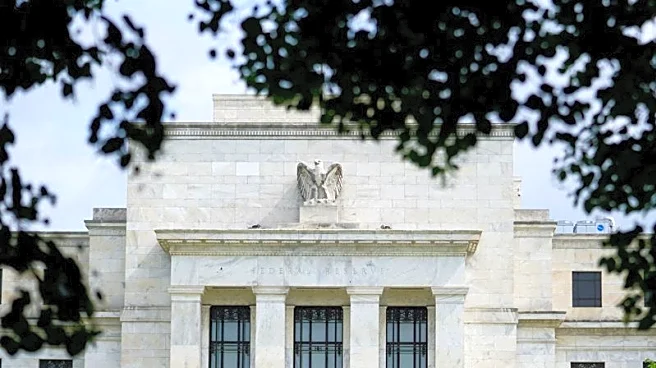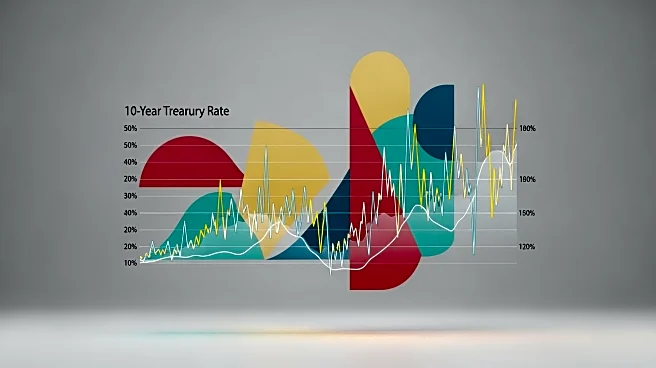What's Happening?
The national debt represents the total amount of money the federal government has borrowed to cover expenses exceeding revenue. This debt is accumulated through the issuance of marketable securities like Treasury bonds and notes. The U.S. has carried
debt since its inception, with significant increases during events like wars and economic crises. The national debt enables the government to fund essential programs and services despite revenue shortfalls. The debt ceiling, set by Congress, limits the amount of debt the government can incur, impacting its ability to meet financial obligations.
Why It's Important?
The national debt is a critical component of the U.S. economy, influencing fiscal policy and economic stability. It allows the government to maintain operations and invest in public services, but also poses challenges like increased interest payments and potential impacts on credit ratings. The debt-to-GDP ratio is a key indicator of fiscal health, reflecting the country's ability to manage and repay its debt. Understanding the national debt is essential for policymakers, investors, and the public to assess economic priorities and sustainability.
What's Next?
Future fiscal policies will need to address the growing national debt, balancing the need for public investment with fiscal responsibility. Potential measures include adjusting tax policies, reducing spending, or reforming entitlement programs. The debt ceiling will continue to be a point of negotiation in Congress, with implications for government operations and financial markets. Monitoring interest rates and economic growth will be crucial in managing the debt's impact on the economy.















